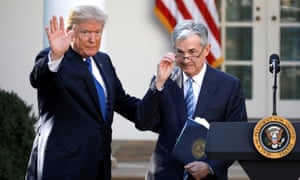Chris Giles, James Politi, Martin Arnold and Robin Harding in The FT
Once, central bankers knew what they needed to do to handle inflation. As they grapple with the economic consequences of the coronavirus pandemic, the consensus on how best to foster low and stable price growth has broken down.
After years of setting interest rates on the basis of inflation forecasts and seeking to hit a target of about 2 per cent, the leading monetary authorities around the world are pursuing different strategies.
The OECD warned this week that “vigilance is needed”, but any attempt to raise interest rates should be “state-dependent and guided by sustained improvements in labour markets, signs of durable inflation pressures and changes in the fiscal policy stance” — so vague that every major central bank can say its policy meets the criteria.
The US Federal Reserve has shifted its stance to give more leeway to inflation and greater priority to employment, the European Central Bank is embroiled in a row over whether to be more tolerant of any inflation overshoot, and the Bank of Japan is vainly battling to revive consumers’ price growth expectations.
The US shift in strategy has been the most radical; last year Fed chair Jay Powell announced a new monetary framework.
The Fed’s creed seeks to move away from decades of pre-emptive interest rate increases to stave off potential inflationary pressures while more doggedly pursuing full employment, a strategy that it argues will benefit more Americans, including low-wage workers and minority groups.
It will allow inflation to overshoot its 2 per cent target for some time after a prolonged undershoot, in an attempt to ensure companies and businesses expect interest rates to remain low for a long time and will therefore spend rather than save. One of the Fed’s motivations is to avoid repeating its stance after the financial crisis, when policy tightening slowed the recovery.
“I am attentive to the risks on both sides of this expected path,” said Lael Brainard, a Fed governor, on Tuesday. She would “carefully monitor” inflation data to make sure it did not develop in “unwelcome ways” but also “be attentive to the risks of pulling back too soon”, she said, warning that pre-pandemic trends of “low equilibrium interest rates [and] low underlying trend inflation” were “likely to reassert” themselves.
But critics worry the Fed’s strategy was designed for a world of cautious fiscal policy, not the pandemic era of massive borrowing and spending, and that this could leave it behind the curve if price pressures build.
Friday’s 3.1 per cent annual rise in the core personal consumption expenditure index reinforced some of those fears.
The BoJ has been pursuing an inflation-overshoot commitment for the past five years, but has not even got close to its 2 per cent target. Strikingly little has changed after the pandemic: inflation is nowhere on the horizon and spending growth is sluggish.
Japan’s households and companies are convinced inflation will remain near zero, making it all but impossible for the BoJ to achieve its goal.
“The formation of inflation expectations in Japan is deeply affected by not only the observed inflation rate at the time but also past experiences and the norms developed in the process,” BoJ governor Haruhiko Kuroda said in a recent speech.
Meanwhile eurozone policymakers are embroiled in a furious argument as the ECB conducts its own policy review; the results will be announced in September.
Olli Rehn, who sits on the council as governor of Finland’s central bank, recently said: “From the point of view of economic and social welfare it makes sense to accept a certain period of [inflation] overshooting, while taking into account the history of undershooting.”
But Isabel Schnabel, an ECB executive director, warned that would be risky. Schnabel said last month that although the central bank should not overreact if inflation overshoots after sluggishness, she is “sceptical” of formally targeting average inflation over a set period.
“How long should the period be over which the average is calculated? How much of that should be communicated?” she asked. “I personally don’t think we should follow such a strategy.”
For some economists, these disagreements are beside the point: monetary policy has become so extended that central bankers lack effective tools to do more.
Richard Barwell, head of macro research at BNP Paribas Asset Management, said the ECB was almost “out of ammunition” and while eurozone inflation in May rose just above its target of near but below 2 per cent, it would take ambitious fiscal policy or simply luck to do so for a sustained period.
“Unless there is some massive Biden-style fiscal stimulus coming down the road in Europe or the disinflationary headwinds suddenly dissipate, the amount of monetary stimulus needed to get inflation above 2 per cent is . . . well beyond what they can do,” he said.
That leaves the Fed alone with a difficult choice in the months ahead. US inflation is overshooting its target, demand is rampant and it needs to decide whether to apply the brakes gently.
Policymakers are poised to open a debate winding down some support, but they have shown no sign of wavering from their new policy framework, insisting the recent inflation rise is likely to be transitory, not sustained.
Last week Fed vice-chair Randal Quarles said the framework was designed for the current world with “slow workforce growth, lower potential growth, lower underlying inflation and, therefore, lower interest rates”.
“I am not worried about a return to the 1970s,” he said.





